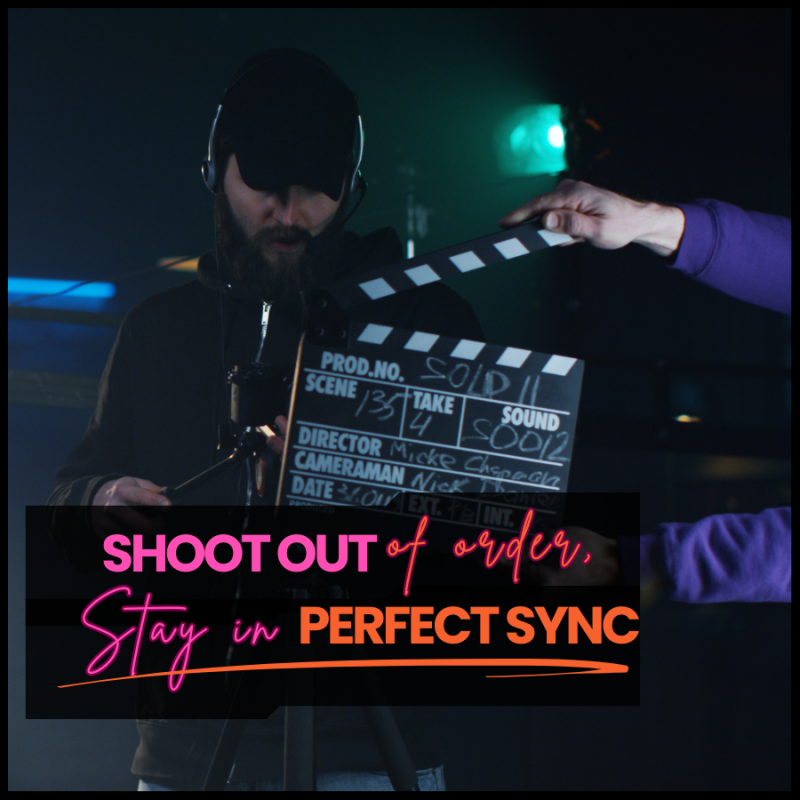Shooting out of sequence is the industry norm. It saves time, money, and logistical headaches—but it can also create major challenges in continuity and performance. For indie filmmakers, where every scene counts, staying organized is key to keeping your story seamless and performances emotionally consistent.
Here’s how to do it without losing the thread of your film.
1. Keep an Emotional Map
An emotional map tracks where each character is in their arc at any given moment.
- Include notes on their mood, motivations, and relationships in each scene.
- Share it with actors so they can match emotional beats no matter when they shoot them.
Pro Tip: Color-code highs, lows, and turning points for quick reference.
2. Use a Dedicated Continuity Log

Your script supervisor (or you, if wearing that hat) should keep these records of:
- Wardrobe and props
- Hair and makeup details
- Actor positions and blocking
- Lighting setups
Even a small visual mismatch can pull audiences out of the story.
3. Take Reference Photos
After each setup, snap quick photos of the set, costumes, and actors.
- Use your phone, but back them up daily.
- Organize photos by scene and take close-ups of props and set dressing.
These images become invaluable when recreating a look weeks later.
4. Detailed Wardrobe, Prop Sheets

Track:
- Exact clothing items and accessories for each scene
- Placement of every prop
- Notes on wear and tear for continuity
Bonus: Keep duplicates of fragile or consumable props to avoid last-minute scrambles.
5. Rehearse Transitions
If Scene 25 emotionally leads into Scene 26—but you’re shooting Scene 26 first—rehearse both together before rolling.
- Helps actors keep emotional momentum
- Minimizes the risk of tone mismatches
6. Communicate Emotional Context

Before calling “Action,” quickly remind your actors:
- What just happened in the story
- Who they’re speaking to
- The stakes of the moment
This keeps performances grounded even when scenes are shot weeks apart.
7. Keep the Script Supervisor Involved in Performance Notes
It’s not just about matching visuals—performance continuity matters too.
- Have your script supervisor flag delivery, energy, and physicality that need to match earlier or later scenes.
- Small adjustments can make big differences in flow.
Shooting out of order can work for you—not against you—if you stay disciplined with continuity and intentional about emotional beats. Organized prep means your audience will never know the scenes were filmed months apart.
Transform Your Script
At the Independent Film Arts Academy (IFAA), we believe strong storytelling starts before the first scene is shot. Want to create a script that guides actors through emotional beats with clarity—no matter the shooting order?

Check out Transformational Screenwriting on Amazon and learn how to craft emotionally compelling stories that inspire unforgettable performances.
📘 Get your copy now and take your storytelling to the next level.

